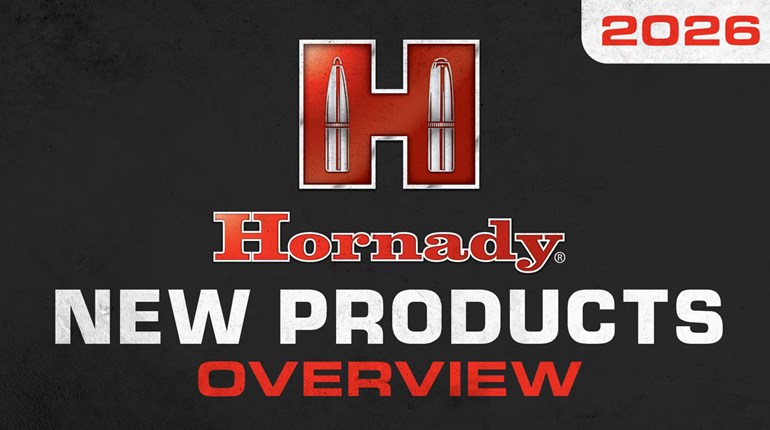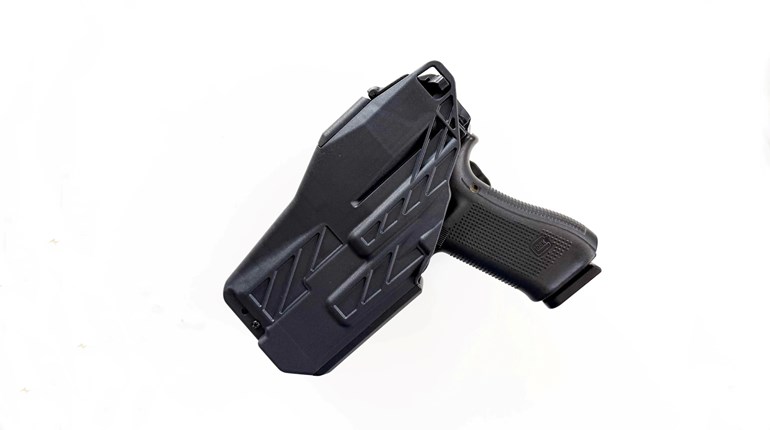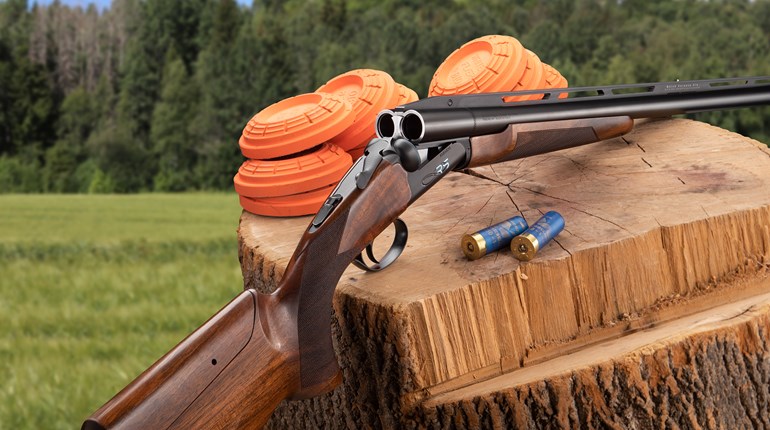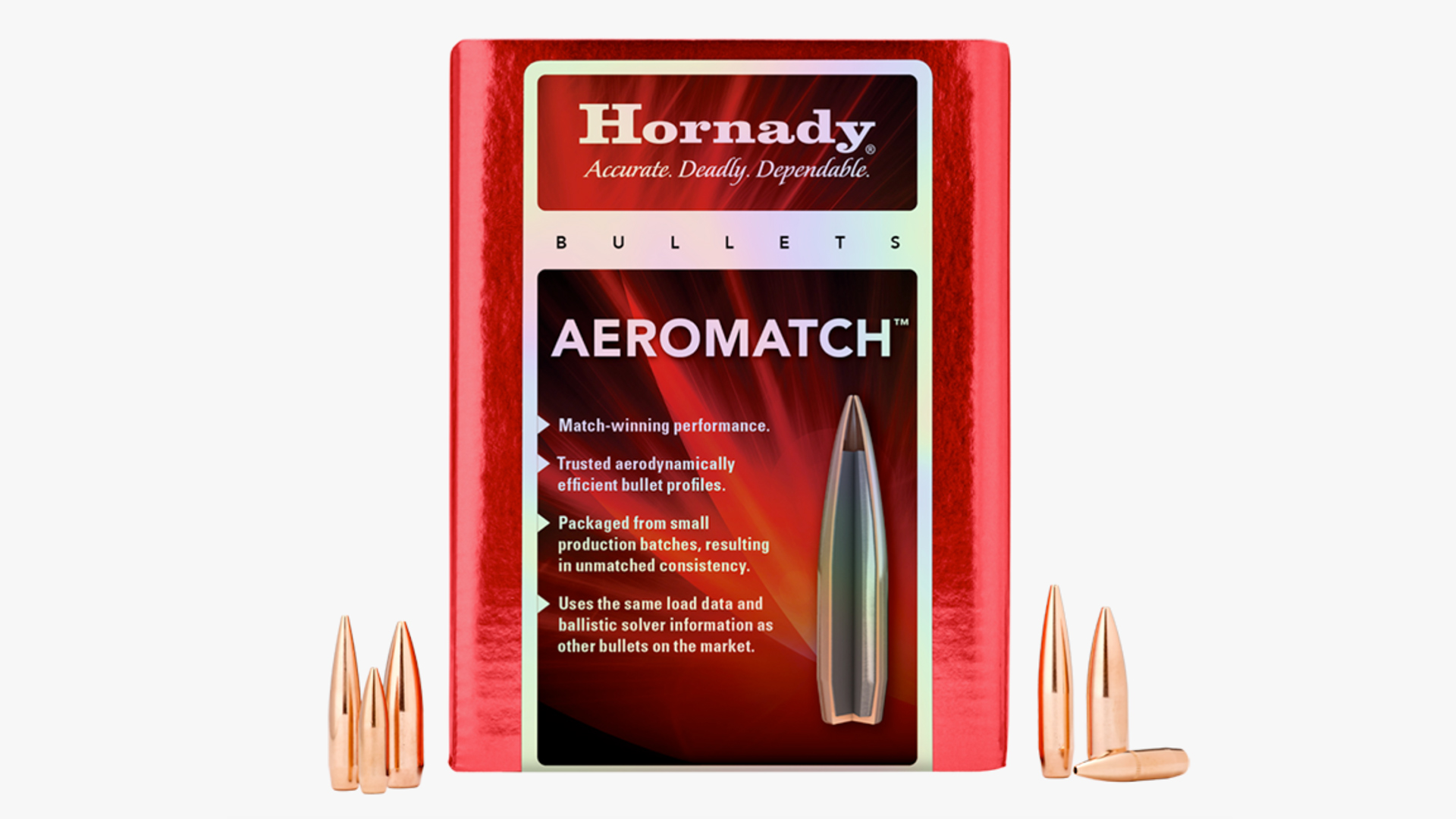
A new match-grade bullet from Hornady comes with the claim the handloader need make no changes in die setup or powder charge—or even ballistic solver data—from that presently being used for another manufacturer’s identical bullet. Simply substitute the Hornady Aeromatch bullet, “… and all you gotta do is pull the trigger,” according to a Hornady video.
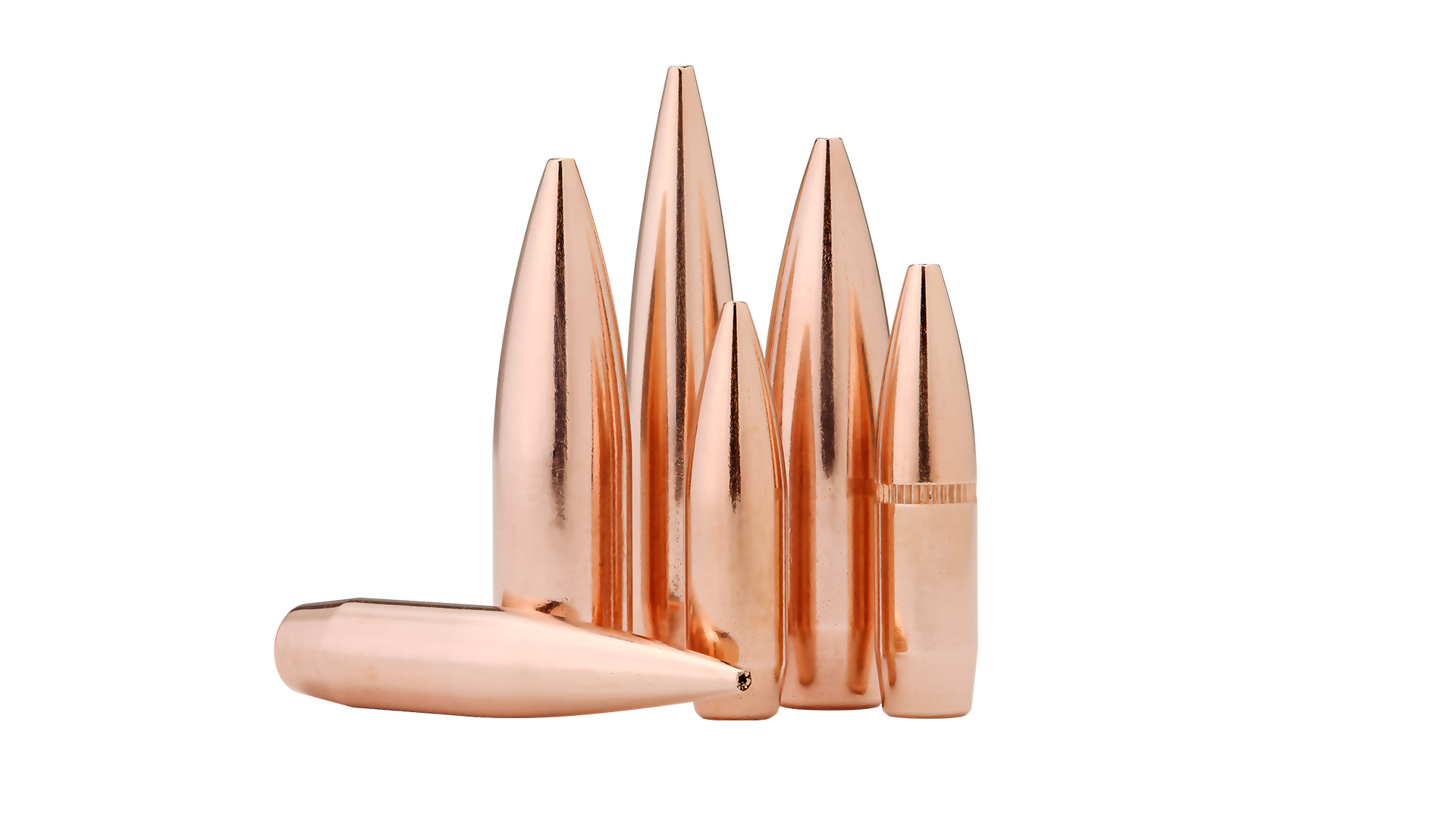
Hornady bases that claim on offering the new Aeromatch bullets with two popular match bullet profiles, the tangent ogive profile, and hybrid or “compound profile,” and in the most popular bullet weights.
Match-grade rifle bullets typically feature one of three configurations identified by the angle of radius of the ogive; they are tangent, secant and hybrid (or compound) profiles. Viewed from the side, tangent ogive profile bullets present a gently curving profile when transitioning from the bullet’s bearing surface—the shank, which contacts the bore and rifling—to the nose, an angle (radius) which helps the bullet align properly within the bore. A second advantage is that bullet seating depth within the cartridge case, which determines how far a bullet must “jump” to reach the rifling and affects accuracy, is less critical than with a secant ogive profile bullet. Because magazine length determines the minimum seating depth of bullets, handloaders may select tangent ogive profile bullets unless single-loading, such as during slow-fire prone stages of a High Power Rifle match. The downside of the tangent profile is that it is less aerodynamic than a secant ogive bullet, so has a comparably lower ballistic coefficient (BC).

Secant ogive bullets have a more abrupt transition from bearing surface to nose, which makes it quite sensitive to seating depth within the cartridge case. A difference of .003 inch in bullet seating depth between two cartridges can translate into lost points when shooting at 600, 1,000 or more yards downrange. But its advantage over the tangent ogive bullet is a comparably higher BC, making secant ogive bullets a popular choice for long-range shooting despite its sensitivity.
A hybrid ogive or compound profile bullet somewhat splits the difference between tangent and secant ogive bullets, incorporating the advantages of both tangent and secant ogive bullets. It aligns well with the bore, is less sensitive to seating depth and maintains a higher BC.

New, identical
Hornady introduces its hollow point boat tail (HPBT) Aeromatch bullet in .22 caliber, 6 mm, 6.5 mm and .30 caliber versions. The .22 caliber Aeromatch bullets of 69 and 77 grains are tangent ogive profile, as are the .30 caliber 168-grain and 175-grain Aeromatch bullets. Aeromatch bullets of 6 mm (105-grain) and 6.5 mm (140-grain), popular among long-range competitors who single-load cartridges by hand into the chamber, feature compound profiles.
These are the calibers, profiles and bullet weights most used in precision rifle shooting disciplines, and Aeromatch bullet weights, profiles and BCs are essentially identical to those of premium match-grade bullets already offered by other major manufacturers. Hornady acknowledges, “The new Aeromatch bullets feature the most popular match bullet profiles and weights from across the industry.” This explains Hornady’s comment about no need to change die settings, load data or ballistic solver data when switching to Aeromatch bullets.
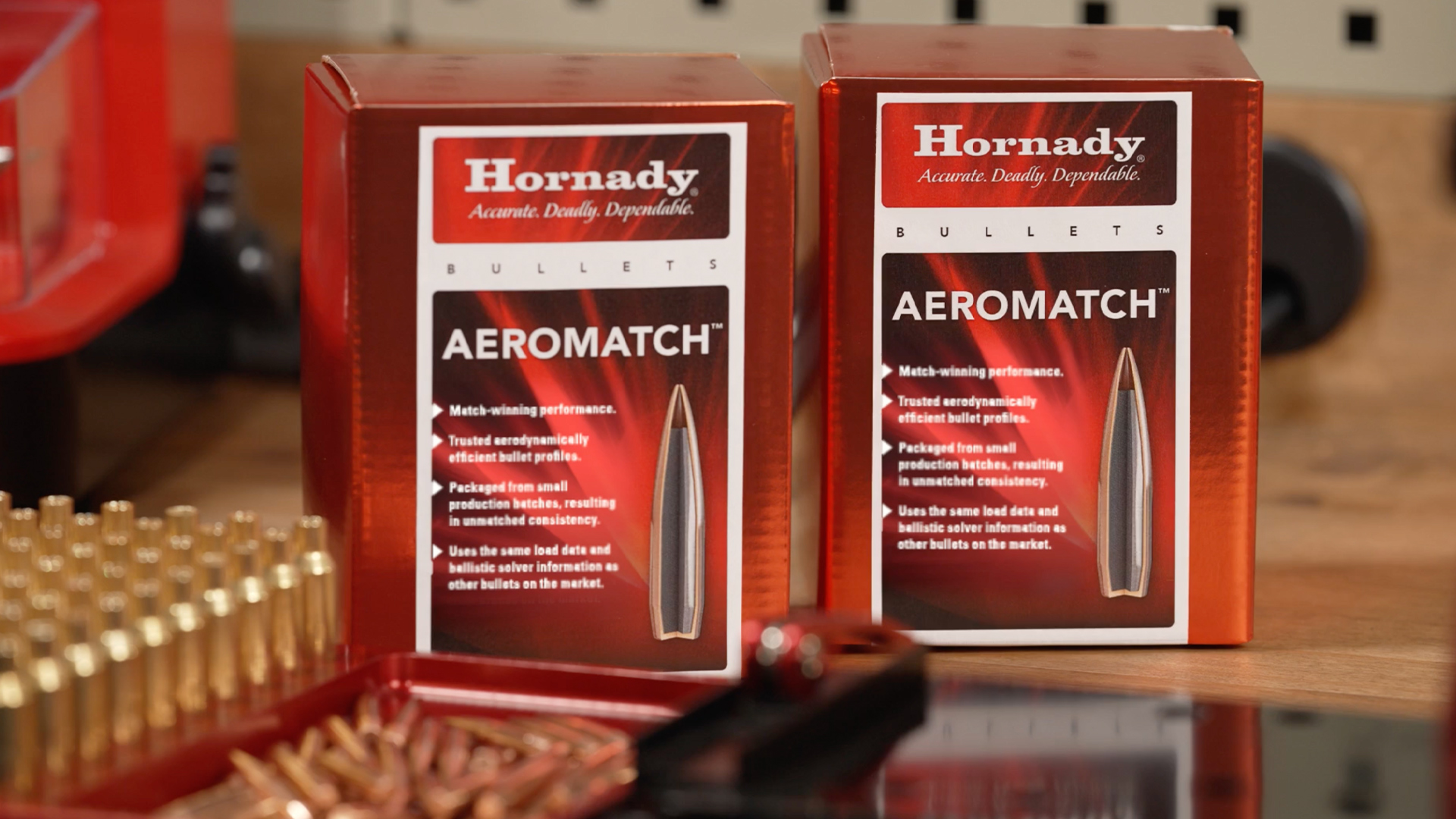
Hornady’s real innovation with Aeromatch is not in an all-new bullet, but in how the company is offering it to competitors. Handloaders can buy a batch of 3,000 Aeromatch bullets all from the same small-run lot in a single purchase, enough to last several years or through the life of some match-grade barrels, without need to make loading adjustments due to small differences between lots. Of course, 500-round boxes are available, too. The second appeal is in apparent cost savings, as Hornady says Aeromatch bullets are “competitively priced,” marketing language that of course means, “costs less than the other fellow’s.” For the high-volume precision shooter, these are both important points.
Especially given the frequent shortages of match-grade bullets the past several years, Hornady’s Aeromatch is a welcome additional option to the precision competition handloading fraternity. Hornady enjoys an outstanding reputation for quality, and the new Aeromatch bullet is worth a try. It appears per-bullet retail cost may be 30 to 55 cents each, depending upon the specific bullet. A new Hornady product for 2025, we can expect availability by the first quarter of next year.















